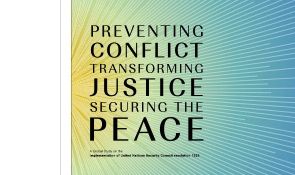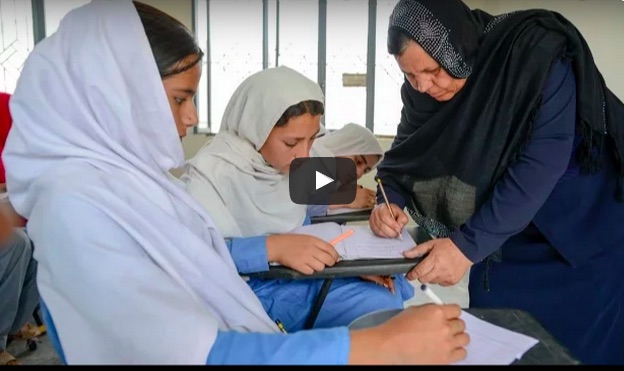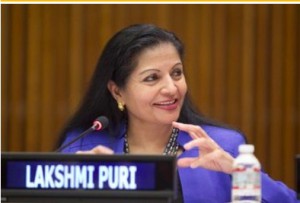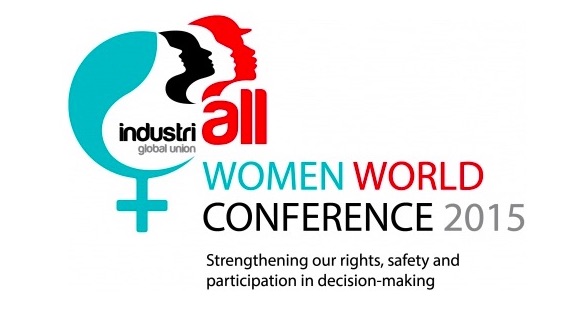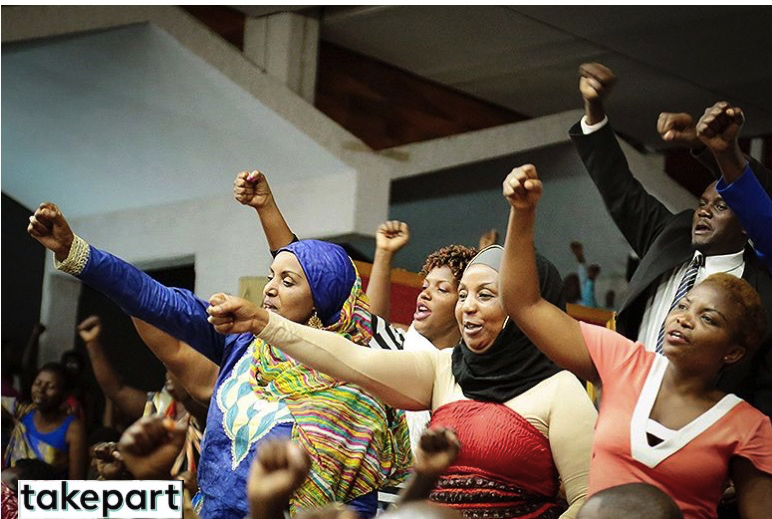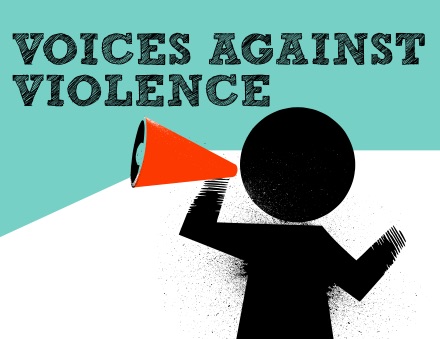. WOMEN’S EQUALITY .
An article by Eleanor J. Bader, Truthout (reprinted by permission)
Several weeks ago, in early October, a host of religious leaders stood in front of the 41-year-old Preterm clinic in Cleveland, Ohio, to thank God for abortion providers and bless their work. Sponsored by the Ohio Religious Coalition for Reproductive Choice (RCRC), the bold ceremony was meant to publicize the fact that in many traditions – including mainline Protestant, Jewish and Muslim – abortion is considered an acceptable, and yes, moral, option.
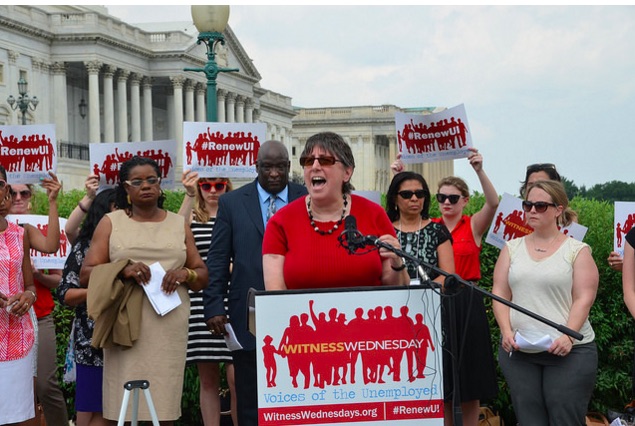
Sammie Moshenberg from the National Council of Jewish Women speaks at an event combating unemployment in Washington, DC, June 18, 2014. (Photo: Center for Effective Government)
“We went to Preterm because anti-abortion legislators have been aggressively working to push abortion out of reach for Ohio women,” Lisa Weiner-Mahfuz, RCRC vice president of programs and fund development, told Truthout. “This includes unnecessary restrictions on abortion care providers, like Preterm, to force them to close. Ohio RCRC believes it’s time for the progressive religious community to stop silently watching women be attacked for their decision to have an abortion and start sharing their beliefs out loud.”
The decision by clergy to move from private, closed-door pastoral counseling sessions into public activities like the clinic blessing was further provoked by recent attempts to defund Planned Parenthood. The threat against the reproductive health organization galvanized faith groups throughout the United States, among them Catholics for Choice, the National Council of Jewish Women, the Muslim Education Center for Creative Academics, the Union for Reform Judaism, the Unitarian Universalist Women’s Federation and the United Church of Christ, prompting them to ramp up their visible support for reproductive rights and gender justice.
They mobilized quickly, among other things, gathering signatures from more than 50 denominational heads and prominent religious leaders on a letter to the Senate affirming widespread religious support for choice. “A world without Planned Parenthood would be disastrous for women and their families,” the missive declared. As part of a massive outcry from Americans in every corner of the country, the effort succeeded: At least for now, Planned Parenthood funding is safe.
Of course, that’s good news, but the progressive faith community is not retreating in the face of the averted crisis. Instead, it’s taking affirmative steps to promote gender equity more broadly. Furthermore, feminists of faith are linking reproductive well-being to efforts to improve sexual health, end rape culture, promote LGBTQ equality and stop domestic violence. They’re also working to protect immigrants, and ameliorate poverty and hunger, placing these issues under the broad rubric of reproductive justice. And although this effort is not wholly new – religious reproductive and social justice groups have existed for decades – the fact that clergy are taking to the streets and entering the halls of Congress is noteworthy.
Carol Hornbeck, a marriage and family therapist who has been involved in faith-based reproductive justice work since the 1980s, sees these moves as imperative and says that without an intersectional analysis of oppression, religious bodies will become irrelevant.
“Many mainline Protestant churches are fighting for their survival,” she said. “At the same time, the church renewal movement is trying to be authentic and bring millennials into organized congregations. Many of the millennial women they hope to attract have had abortions and have been more open and outspoken about this than previous generations. These young women have no patience for the silence of the church on important social issues – whether Black Lives Matter, reproductive justice or LGBTQ inclusion – and are reinventing the institution.”
At the heart of the reinvention, Hornbeck adds, is a willingness to tackle controversial topics, speak truthfully about lived experiences and call out hypocrisy.
This is music to divinity student Abbi Heimach-Snipes’ ears. Now in her final year at Chicago’s McCormick Theological Seminary, she says that when the most recent attacks on Planned Parenthood became public, she and her peers felt “frustrated and upset” but saw the right-wing assault as inseparable from the fight for racial justice, and against homophobia, transphobia, sexism and the violence that disproportionally impacts low-income communities of color.
(Article continued in right column)
Protecting women and girls against violence, Is progress being made?
Abortion: is it a human right?
(Article continued from left column)
But how best to use the power of the institutional church – or other established religion bodies – to address these concerns? Although Heimach-Snipes is no stranger to political protests, regularly attending demonstrations and rallies, she said that many congregations can do more to advance a progressive political agenda. She calls the church she attends, Urban Village, a model and describes a recent Sunday gathering that confronted sexual violence.
“One of the pastors there, Rev. Emily McGinley, has organized a sermon series on sexuality,” Heimach-Snipes said. “A few weeks ago she preached on Second Samuel, about the rape of King David’s daughter, Tamar, by her brother Amnon. Tamar’s father and his other sons silenced her and did not hold Amnon accountable. This led to more silence and more terror. Rev. McGinley spoke about power dynamics and tied the story to today’s rape culture. We then looked at ways we can begin to stop the silence.” Heimach-Snipes described the sermon and subsequent discussion as powerful, even profound.
In addition, she added, each Sunday, Urban Village invites congregants to share the issues they’re struggling with. Whether it’s sexual violence, substance abuse, police brutality, landlord-tenant conflicts or something else, the stories become part of what Heimach-Snipes calls “community memory.” This, in turn, serves as a way to publicly address trauma, abuse or injury while simultaneously acknowledging the testifier’s strength and problem-solving abilities. Churches like Urban Village may not be entirely typical, but they’re not anomalous – all over the country congregations are serving as conversational launching pads and are taking action on issues that impact their communities.
On a more policy-driven level, faith-based advocacy groups around the United States are engaged in educational work to promote increased access to services and entitlements. The National Council of Jewish Women, for example, is part of a coalition to support HEAL (Health Equality and Access Under the Law) for Immigrants and Families, a federal bill to extend Medicaid and Child Health Insurance Program benefits to lawful immigrants, and is pushing lawmakers to support the EACH Act, intended to overturn the Hyde Amendment and allow Medicaid recipients to use their coverage to pay for abortions. They’re also urging Congress to pass the Women’s Health Protection Act to make it unlawful for states to single out reproductive health facilities for stricter regulation than other types of medical centers.
What’s more, like other reproductive justice proponents, the National Council of Jewish Women’s advocacy goes beyond abortion and birth control to include improving community health, with goals that involve raising the minimum wage, ending police brutality and promoting gun control.
Still other groups, like the Catholic Network Lobby and the New Sanctuary Movement, are promoting women’s rights by focusing on unfair taxation, immigration reform and opposition to punitive welfare policies.
“Abortion access does not play an active part in our work,” said community organizer Nicole Kligerman of the Philadelphia New Sanctuary Movement. “But other reproductive health-care issues are paramount. We know the importance of prenatal care and early intervention but mothers and babies can’t get nutritional support through the Women, Infant, Children program [WIC] if they’re not citizens. This inequity occurs at the intersection of child welfare, reproductive health and immigrant rights.”
Placing reproductive health into a broad social justice frame holds great significance for feminists of faith who understand that moral and ethical choices have political implications. Do we believe we have the capacity to make thoughtful decisions for ourselves? Does free will give us the right to decide when and whether to become parents? Does it allow us to be who we are and love who we love? Or does it condemn us for anything that deviates from expected norms?
For RCRC’s Lisa Weiner-Mahfuz, promoting reproductive justice requires us to think about the kind of world we wish to live in. “We can’t ignore that abortion is still a trigger in the ways it has always been a trigger,” she said, “but it is tied to a broader agenda that is all about policing Black, Brown, disabled, poor, queer, and immigrant bodies, especially if they’re female.” This is why, she says, RCRC has developed a comprehensive training plan to enable clergy to provide compassionate pastoral care and equip them to be reproductive justice advocates in their congregations and communities.
“We have a large number of multifaith religious leaders, all of whom affirm that reproductive health centers are sacred spaces,” Weiner-Mahfuz said. “They’re working to build visibility so that it is clear that most people of faith support reproductive justice, LGBTQ rights and racial equality. We’re standing up and saying that theology should not be used against women, people of color or families. We’re amplifying the message that God’s love is consistent, and for everyone.”
(Thank you to Janet Hudgins, the CPNN reporter for this article.)

